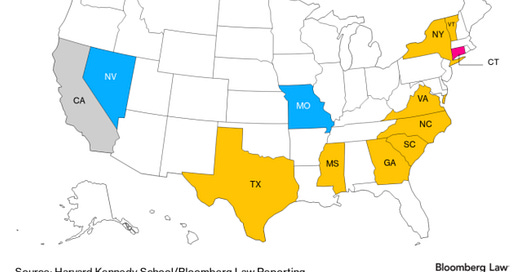Maryland Latest State To Issue EWA Guidance
FTX-Linked Farmington Hit With C&D, Prime Trust Files for Bankruptcy, CFPB To Create Data Broker Rules, Clarification On Dave's Q2 Earnings
Hey all, Jason here.
This is probably the twentieth time I’ve been to Mexico — and I’m not exaggerating when I say that every time it gets better. Many thanks to Revolut México CEO Juan Miguel Guerra Dávila for additional local introductions. As soon as a Revolut Business account is available here, I’ll be signing up for one. If I didn’t see you this tim…



